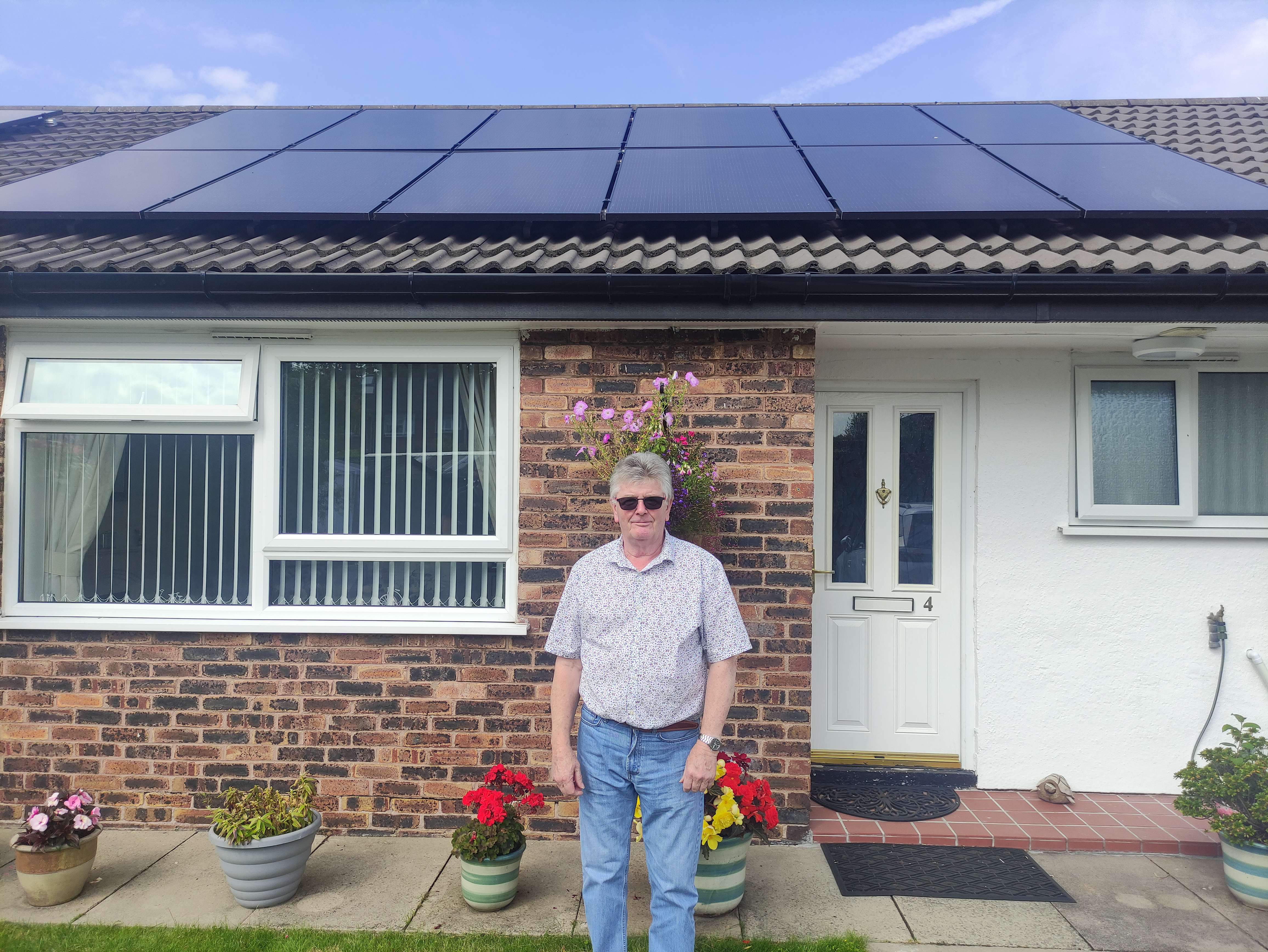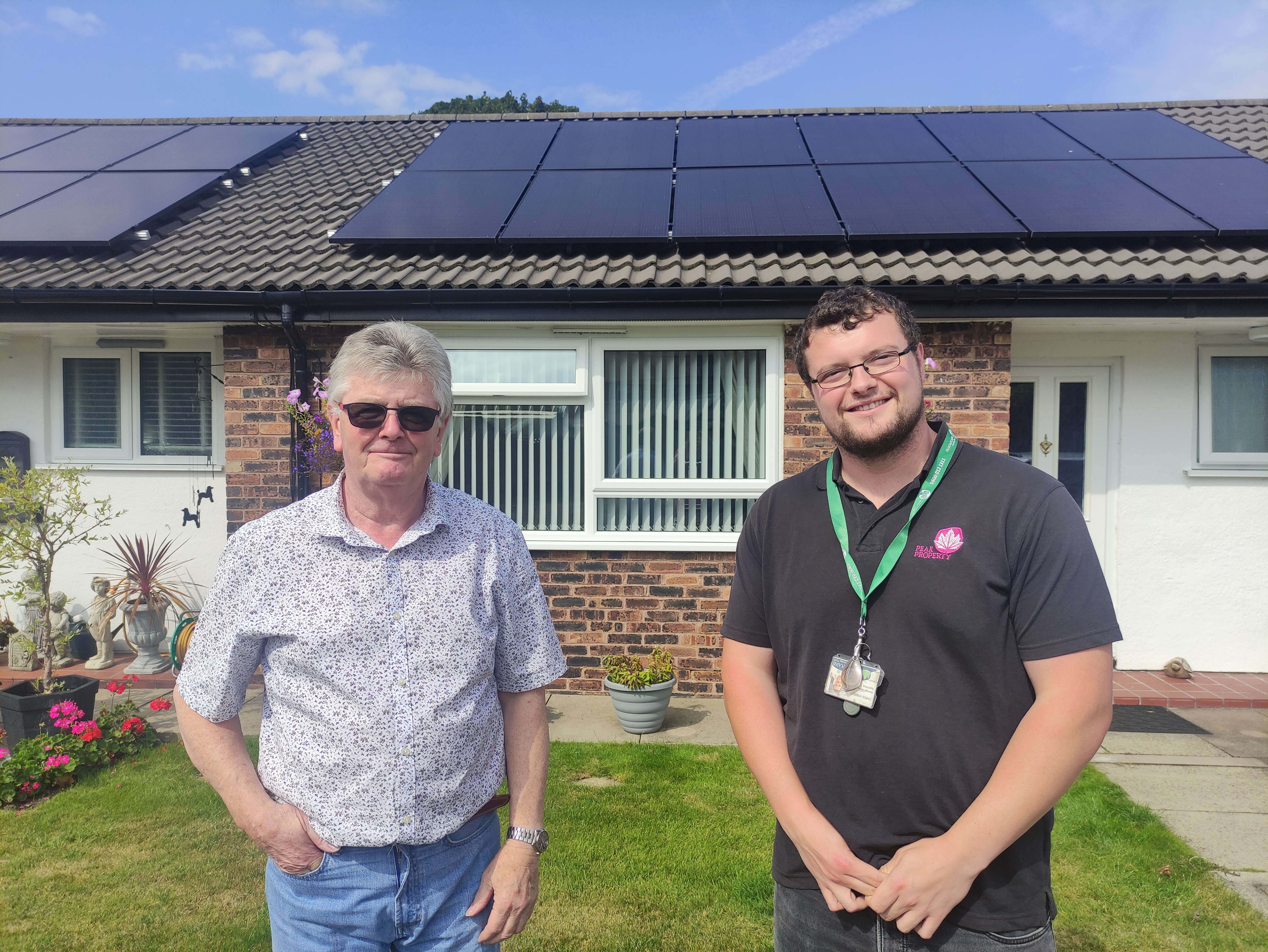Green case study: Marton, Cheshire
We're working with customers to decarbonise our homes. In this bungalow, we installed an air source heat pump alongside solar panels. Here's the impact on the environment and your bills.
Talking with our customer

I live with my life in a one-bedroomed mid terraced bungalow in Marton, which is in a rural part of Cheshire East.
Our home was heated by an electric combination boiler, with the hot water provided by a hot water cylinder with immersion heater.
Our direct debit was £250 every month, to cover the electric for summer and winter, topped up with warm winter fuel payments of £140.
The Trust replaced our central heating system with an air source heat pump and installed solar panels.
The work was carried out in one day with and no damage or redecorating required other than to paint new copper pipe along the bottom of the new radiators.
The work was carried out very efficiently with minimum disruption.
The new heating systems is very easy to understand and works extremely well. The solar panels require no attention from us.
The whole system (heating and solar) is very efficient, and the savings are incredible. Our bill for July was £47, instead of £250. Cost of living price rises in the pipeline will maybe double this, but large savings will still be made.
We haven’t gone through a winter yet. Our new heating system was put in during March 2022, but we used it until mid-May with heating on 22⁰C. Since May, the thermostat unit has been on 10⁰C and we have hot water day and night, absolutely brilliant!!!!!! Thank you.
Talking with our Contracts Manager, Chris Hibbert

This home was originally heated with just an electric boiler. There were no connections to gas. Electricity costs were very high for our customers. The bungalow faced in the right direction for photovoltaic panels (solar panels).
The biggest challenge was the airing cupboard – it’s height and location meant that it would be difficult to access some of the pipes.
We also arranged for cavity wall and loft insulation inspections – so that our customer would meet the right standards for insulation.
I talked to the customers whenever I could. I visited their home so I knew exactly what I was working with – locations, sizes – and also so I could introduce myself and explain why this work was important.
I enjoyed the opportunity to explain the difference between their old heating system and their new air source hear pump – eg different flow temperatures, noise, and how different they will look.
These visits helped me solve any problems early on.
The top things I learned were that:
- We need to chat to our customers before we start work and find out what their concerns are
- We need to talk to customers with our contractor, so we’re all on the same page
- We need to talk about how much money you might save, especially during a cost of living crisis
- I want to visit the homes regularly, to make sure all work is being carried out according to plan
I’ll always try to talk to a customer before doing large-scale work like this. Everyone being on board makes the process so much easier. I’ll also use case studies like this to encourage other customers to make their homes more energy efficient.
This home had an E as it’s EPC rating – one of the least energy efficient options. We asked Cheshire East Council for funding via the Local Authority Delivery Scheme so that we could improve the energy efficiency of this row of bungalows and now, the home has a band C EPC rating. This is exactly what’s needed, as explained in the Affordable Warmth Regulations.
I’m incredibly proud that our customers have had lower energy bills thanks to our work.
Since the homes only have electric heating – no gas – this means the homes are closer to being fully decarbonised. This means that they should meet the 2045 local authority targets and 2050 government targets.


